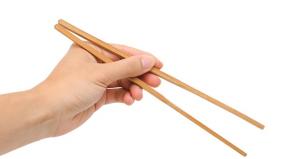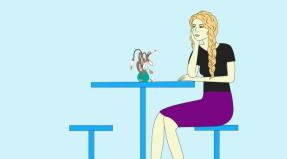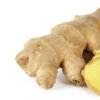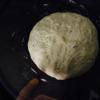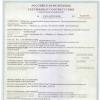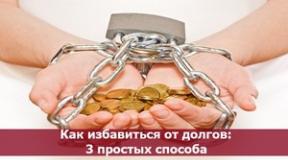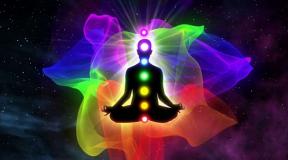Bzhd first aid for burns. Burns, burn shock. Contraindications for burns
Burns are thermal- caused by fire, steam, hot objects and substances, chemical- acids and alkalis, and electrical- exposure to electric current or electric arc. According to the depth of the lesion, all burns are divided into four degrees: I - redness and swelling of the skin; II - water bubbles; III - necrosis of the superficial and deep layers of the skin; IV - charring of the skin, damage to muscles, tendons and bones.
If the victim's clothes caught fire, you need to quickly throw a coat on him, any dense fabric, or knock down the flame with water. You can not run in burning clothes, as the wind, fanning the flame, will increase and intensify the burn.
When providing first aid to the victim, in order to avoid infection, you should not touch the burned areas of the skin with your hands or lubricate them with ointments, fats, oils, petroleum jelly, sprinkle with baking soda, starch, etc. It is impossible to open blisters, remove mastic, rosin or other resinous substances adhering to the burnt place, since by removing them, you can easily tear off the burned skin and thereby create favorable conditions for wound infection.
For small-sized burns of I and II degrees, a sterile bandage should be applied to the burned area of the skin.
Clothing and shoes from the burnt place must not be torn off, but must be cut with scissors and carefully removed. If pieces of clothing stuck to the burned area of the body, then a sterile bandage should be applied over them and the victim should be sent to a medical facility.
In case of severe and extensive burns, the victim must be wrapped in a clean sheet or cloth without undressing him, covered and given warm tea to drink, rest until the doctor arrives.
The burnt face must be covered with sterile gauze.
In case of eye burns, cold lotions should be made from the solution boric acid(half a teaspoon of acid in a glass of water) and immediately refer the victim to a doctor.
CHEMICAL BURNS
In chemical burns, the depth of tissue damage depends on the duration of exposure to the chemical. It is important to reduce the concentration of the chemical and the time of exposure as soon as possible. To do this, the affected area is immediately washed with a large amount of running water. cold water from the tap, from a rubber hose or bucket for 15-20 minutes.
If acid or alkali gets on the skin through clothes, then first you need to wash it off with water from the clothes, and then carefully cut and remove wet clothes from the victim, then rinse the skin.
If sulfuric acid or alkali in the form of a solid gets on the human body, it must be removed with dry cotton wool or a piece of cloth, and then the affected area should be thoroughly washed with water.
With a chemical burn, it is not possible to completely wash off the chemicals with water. Therefore, after washing, the affected area must be treated with appropriate neutralizing solutions used in the form of lotions (bandages).
Further assistance for chemical burns is the same as for thermal ones.
BURNS FROM ACIDS AND ALKALS
When the skin is burned with acid, lotions (bandages) are made with a solution of baking soda (one teaspoon of soda per glass of water).
If acid in the form of a liquid, vapor or gas gets into the eyes or mouth, rinse them with plenty of water, and then with a solution of baking soda (half a teaspoon per glass of water).
For skin burns with alkali, lotions (dressings) are made with a solution of boric acid (one teaspoon of acid per glass of water) or a weak solution of acetic acid (one teaspoon of table vinegar per glass of water).
If splashes of alkali or its vapors get into the eyes and mouth, rinse the affected areas with plenty of water, and then with a solution of boric acid (half a teaspoon of acid in a glass of water).
If solid pieces of the chemical get into the eye, they must first be removed with a damp swab, as when washing the eyes, they can injure the mucous membrane and cause additional injury.
If acid or alkali enters the esophagus, you should immediately call a doctor. Before his arrival, saliva and mucus should be removed from the victim’s mouth, put him in heat, cover, and put “cold” on his stomach to relieve pain.
ELECTRIC SHOCK
In case of electric shock, it is necessary to release the victim from the action of the current as soon as possible, since the severity of the electrical injury depends on the duration of exposure to electric current. This must be done carefully, in compliance with safety measures.
In all cases, the caregiver should not touch the victim, who is under the influence of electric current, without proper precautions, as this is life threatening.
In all cases of electric shock, calling a doctor is mandatory, regardless of the condition of the victim. If it is not possible to quickly call a doctor, it is necessary
promptly deliver the victim to a medical facility, providing the necessary vehicles or stretcher.
If the victim is conscious, but before that he was in a state of fainting, he should be placed in a comfortable position (lay under him and cover him with something from the top of his clothes) and ensure complete rest until the doctor arrives, continuously monitoring breathing and pulse.
If the victim is unconscious, but with a stable breathing and pulse, he should be laid evenly and comfortably, unfasten his clothes, create an inflow fresh air, give a sniff of ammonia, spray your face with water and ensure complete rest. If the victim is breathing poorly - very rarely and convulsively - he should do artificial respiration and an indirect (external) heart massage.
With electric shock, death is often clinical (“imaginary”), so you should never refuse to help the victim and consider him dead due to lack of breathing, heartbeat, pulse. Only a doctor has the right to decide on the expediency or futility of measures to revive the victim and make a conclusion about his death.
A burn is damage to body tissues caused by high temperatures (thermal burns), chemicals (chemical burns), or high-voltage electrical currents (electrical burns).
Thermal burns can occur when the body comes into contact with a hot medium (steam, boiling water, fire, etc.). There are four degrees of burns according to the severity of the lesion. Burns of the 1st degree (superficial) are characterized by redness of the skin, swelling of the burnt area, and acute burning pain. With second-degree burns on a reddened and swollen surface, the surface layer of the skin immediately or after a while exfoliates, blisters are formed, filled with a transparent yellowish liquid; some of the blisters burst, exposing the sore surface; the burnt area is very painful. Third degree burns are characterized by necrosis of the skin to varying depths. IV degree burns occur when tissues are exposed to very high temperatures (flame, molten metal, etc.). In this case, necrosis is observed not only of the skin, but also of deeper lying tissues (subcutaneous adipose tissue, muscles, tendons, sometimes bones).
The severity of the victim's condition depends on the degree and area of the burn: if up to 12% of the total body surface area is burned, then the person can be saved; with a larger area of damage, shock occurs, and then a burn disease develops. The area of a burn in an adult can be approximately determined by the rule of nines: the surface of the head and neck is 9%; leg - 18; hand - 9; front and back surfaces of the body - 18 each; genitals and perineum - 1%.
First aid for burns begins with the cessation of exposure to dangerous production factor- extinguish (remove) burning or smoldering clothing, throwing a dense cloth over the victim and pressing it to the body. Thus, the access of air to the burning area is stopped. The flame can be knocked down by rolling on the ground, pressing burning areas of clothing to it (or other surface), extinguished by a jet of water or immersion in water. In no case should you run in burning clothes or shoot down a flame with unprotected hands. If the burn is caused by a hot liquid that has soaked clothing, then it should be removed immediately.
In all cases, the victim should be removed (or taken out) from the zone of exposure to flame, thermal radiation, smoke, toxic combustion products (carbon monoxide, etc.). Burned areas should be cooled quickly.
In case of a chemical burn (with concentrated acids, alkalis and salts of heavy metals), it is necessary to immediately abundantly water the affected surface with plenty of running water (until the characteristic odor disappears), which dilutes and washes away the aggressive substance, and also cools the tissues. After that, the affected area should be washed with a 2% solution of baking soda for acid burns or a 1% solution of citric (acetic) acid for alkali burns. Then a sterile bandage is applied to the burn surface.
In all cases, for any burn, the victim must be given an anesthetic (for example, one or two tablets of analgin), and a dry sterile bandage should be applied to the burned surface (no powders or ointments). In case of burns of closed areas of the skin, it is required to carefully cut around pieces of tissue adhering to the burned surface and, without cleaning the burned area, apply a sterile bandage. Extensive burn surfaces (more than 30% of the body surface) should be covered with a clean, ironed sheet and the victim should be given complete rest. To reduce pain in burns of I and II degrees, it is advisable to apply on damaged surfaces twice a day alcohol compresses: gauze napkins, folded in two or three layers and soaked in pure ethyl alcohol, are placed on the burned surface, waxed paper is placed on top (to prevent drying) and bandaged. If the affected do not have nausea and vomiting, they should be given as often as possible small portions of hot tea, coffee or an alkaline-acid solution (1 teaspoon of table salt and 0.5 teaspoon of baking soda per 1 liter of water). To warm the victims, it is necessary to wrap them in warm clothes, blankets, etc.
Burns are tissue damage caused by high temperature, electric current, acids, alkalis or ionizing radiation. Accordingly, thermal, electrical, chemical and radiation burns. Thermal burns are the most common, accounting for 90-95% of all burns.
The severity of burns is determined by the area and depth of tissue damage. Depending on the depth of the lesion, four degrees of burns are distinguished. Superficial burns (I, II degrees) under favorable conditions heal on their own. Deep burns (III and IV degrees) affect, in addition to the skin, deep-lying tissues, so skin grafting is required for such burns. Most affected usually have a combination of burns of varying degrees.
Inhalation of flame, hot air and steam can burn the upper respiratory tract and laryngeal edema with the development of respiratory disorders. Inhaled smoke may contain nitric or nitrous acids, and combustion of plastic may contain phosgene and gaseous hydrocyanic acid. Such smoke is poisonous, it causes chemical burns and pulmonary edema. In indoor fires, pulmonary involvement should always be suspected in casualties. Burns of the upper respiratory tract and damage to the lungs lead to impaired oxygen delivery to body tissues (hypoxia). In adults, hypoxia is manifested by anxiety, pallor of the skin, in children - severe fear, tearfulness, sometimes spastic muscle contraction and convulsions occur. Hypoxia is the cause of many deaths in indoor fires.
First aid is to stop the effect of the damaging factor. In case of burns with a flame, extinguish burning clothes, remove the victim from the fire zone; in case of burns with hot liquids or molten metal, quickly remove clothing from the burn area. To stop the effect of the temperature factor, it is necessary to quickly cool the affected area of the body by immersion in cold water, under a stream of cold water or irrigation with chloroethyl. In case of chemical burns (except burns with quicklime), the affected surface is washed with plenty of tap water as soon as possible. If clothes are impregnated with a chemically active substance, you should strive to quickly remove it. Any manipulations on burn wounds are absolutely contraindicated. For the purpose of anesthesia, the victim is given analgin (pentalgin, tempalgin, sedalgin). For large burns, the victim takes 2-3 tablets of acetylsalicylic acid (aspirin) and 1 tablet of diphenhydramine. Before the doctor arrives, they give hot tea and coffee, alkaline mineral water (500-2000 ml) or the following solutions to drink: I solution - sodium bicarbonate (baking soda) 1/2 teaspoon. l., sodium chloride (table salt) 1 tsp. l. for 1 liter of water; II solution - tea, 1 teaspoon is added to 1 liter of it. l. salt and 2/3 tsp. l. bicarbonate or sodium citrate. On burnt surfaces after their treatment 70% ethyl alcohol or vodka impose aseptic dressings. With extensive burns, the victim is wrapped in a clean cloth or sheet and immediately taken to the hospital. Imposing at home on the burn surface immediately after the burn of various ointments or fish oil is not justified, because. they strongly pollute the wound, make it difficult to further process and determine the depth of the lesion. For local treatment of burns, it is better to use multicomponent aerosols (levovinizole, olazol, livian, panthenol), and the use of St. John's wort is also effective.
02.05.2013 14:54
Newsline
- 18:02
- 13:42
- 09:42
- 23:02
- 16:32
- 10:02
- 19:22
- 13:02
- 20:02
- 15:42
- 13:32
- 18:32
- 17:22
- 20:12
- 18:03
- 15:52
burns are tissue injuries that are caused
High or very low temperatures;
Radiation, sunlight and other sources of ultraviolet rays, x-rays and gamma rays;
Caustic chemicals: electric current passed through the body - it has a heating effect and causes blood clotting, can disrupt breathing and cardiac activity;
Friction.
Tissue damage will continue if the cause is not corrected as soon as possible. This means that first aid consists, if possible, in lowering (or raising) the temperature, removing the victim from the source of radiation, removing caustic chemicals by brushing them off the skin and / or washing them.
BURN DEPTH
Depth - an indicator of the severity of the burn; it is used to judge whether the victim needs treatment, and if so, what kind. Burns fall into three categories according to their depth.
Surface. They affect only the surface layer, causing redness, swelling and soreness. Usually they go well without leaving scars. Minor superficial burns sometimes do not even require medical attention.
Medium. After them, blisters will appear, which, if ruptured, can lead to infection of the surface of the body.
Deep. They affect the skin to the full depth and are gray, waxy and charred. Due to nerve damage, even extensive burns can be painful. Extensive burns are usually categorized as deep.
BURN AREA
The larger the burn area, the more likely it is to be severe. Even superficial burns can be dangerous if they are very large. For burns larger than 3 cm in diameter, seek medical attention. Any person who has suffered from a burn more than 9% of the surface of the body needs hospitalization. With extensive burns, the main danger to life is surgical shock and infection. During the first 48 hours, the risk of infection is most dangerous.
Burning clothes
Many serious burns are caused by clothing, especially loose and light clothing such as nightgowns. The fire that broke out on the hem quickly spreads upward if the person remains standing or runs.
IF CLOTHES BURN
1. Immediately make the victim lie down.
2. Use a dry powder extinguisher if available, or try to put out the flames with a suitable heavy material. This will stop the flow of air to the fire. If there is nothing at hand, lay the victim on the ground with the burning side so that he crushes the flame with his body.
Nylon cannot be used. Do not let the casualty roll on the ground as THIS may increase the burn area.
WHEN THE FLAME IS DOWN
The next urgent task is to quickly cool the victim.
Rapid cooling and infection prevention
1. Hot clothing can cause severe burns, so remove, cut or cool with water.
2. For the next 10 minutes, cool the patient by pouring buckets or jugs of cold water over him.
3. Call by phone medical care.
4. Check if the airways are clear.
5. Cover burns with clean towels to reduce the risk of infection.
6. Give the victim regular sips of cold water if he is conscious to replace lost fluids.
Burns from boiling water and hot objects
There is not much difference between burns from boiling water and from hot objects; in both cases, tissue injury is caused by high temperature. Tissue damage occurs quickly, and here the most important thing that a rescuer can do is immediately reduce the temperature of the burn. Cooling significantly reduces the severity of the burn and relieves severe pain.
Treatment of burns from boiling water and hot objects
1. Remove or cut off all clothing covering the burnt surface of the body.
2. Remove all potentially compressive objects (rings, bracelets, watches, etc.) before swelling begins.
3. Hold the burned area under running cold water for at least 10 minutes. With the help of this measure alone, the severity of the burn can be reduced, and instead of being severe, it will turn out to be light. It should be used whenever possible for all burns.
Do not apply oils, ointments, or lotions to burns. Do not tear off anything that is stuck to the surface of the burn.
They should be kept intact as much as possible. To do this, carefully apply a soft pad with a lush layer of cotton wool on top and fix it, trying not to put pressure on the burn, with a transparent adhesive tape.
Treatment of burst bubbles
1. Cover broken blisters with a sterile napkin, if any.
2. Place another piece of cotton wool on top and secure with adhesive tape.
You can not specifically cut or pierce the bladder. The outer layer of the skin forms an ideal defense for the underlying tissues, which can be very susceptible to infection.
· Chemical burns
They are most often caused by strong acids from car batteries or by alkalis such as caustic soda or strong bleaches. Paint thinners and some household cleaners are corrosive. Be careful and try not to get such products on your skin.
SIGNS
Skin burning.
Rapid staining and discoloration.
Skin redness, blistering or peeling.
Chemical burn treatment
1. Immediately and thoroughly rinse the affected area of skin under a hose or tap. This measure will help dilute the chemicals and reduce the severity of the burn. If the burn was caused by a dry chemical, brush it off first with a soft brush.
2. While rinsing, remove or cut clothing soaked in caustic.
3. Cover the burn, if it is inflamed, with a clean cloth or bandage.
4. Take care of the hospitalization of the victim.
Don't waste time looking for a neutralizing agent.
electrical burns
First, the most important thing is to break the contact between the victim and the electrical wiring, and do it in such a way that you yourself do not receive an electric shock.
In case of electric shock and burns
1. Shut off the electricity immediately - unplug or pull out the plug, or turn off the electricity supply to your home completely.
2. If necessary, help yourself with a broom handle or a wooden chair while standing on a dry rubber mat, book, or folded newspaper to move the victim's hand away from the electrical wire.
3. When the victim is safe, check his breathing and pulse.
4. If necessary, perform artificial respiration and chest compressions.
5. Lay the victim on his side if he is unconscious.
6. Treat the burns at the points where the electric current entered and exited the body by cooling them with water.
7. Apply a sterile or clean napkin and bandage.
Never pour water if the victim is still touching the electrical wire.
High voltage electrical wire
Contact with a high voltage wire, such as a high voltage line, is usually fatal to the victim. You, too, can be killed by an electric arc if you are 18 meters or less from the source. Do not allow to approach the victim and other people and call law enforcement immediately.
hypothermia
This condition occurs when body temperature drops below normal level at 37°C. If, for example, heat is constantly blown away by a cold wind, the body's heat-producing process (shivering) may cease to function adequately. The elderly and frail, especially the thin, tired and hungry, are most vulnerable to hypothermia - say, those who live in poorly heated and unheated homes.
Symptoms
Trembling begins, which may intensify.
The skin is cold and dry.
The pulse is slow.
Slow breathing rate in the victim.
The measured body temperature is 35°C or lower.
Drowsiness that may progress to coma.
Cardiac arrest may occur.
PURPOSE OF FIRST AID
The task of the rescuer is to warm the body gradually, but it is necessary to proceed immediately. Never assume that a hypothermic person has died unless it is already obvious. Hypothermia protects the brain from lack of oxygen, and a person can survive longer than usual after a cardiac arrest.
Hypothermia measures: outdoors
2. Move the casualty to a weatherproof location or indoors as soon as possible.
3. Cover the casualty with a sleeping bag or other form of cover.
5. Check your breath.
6. Check your pulse.
7. If there is, give him hot drinks and food.
Hypothermia measures: at home
1. Send for medical help.
2. If the victim is conscious and not injured, put him in a warm bed. Make sure your head is covered (but not your face).
3. Give him hot drink and food.
If the victim has lost consciousness, take measures to revive him, if necessary, by artificial respiration mouth to mouth and chest compressions.
Do not rub the limbs of the victim or force him to move vigorously.
Do not let the victim drink alcohol. This causes heat loss.
Do not put the victim in a hot bath or use hot bottles. This will redistribute the blood from the most important organs of the body to the small vessels of the skin.
frostbite
Frostbite is the most dangerous, as they freeze blood vessels, stopping the access of blood to the affected area of the body. This can lead to gangrene.
Prominent parts of the body, such as the tip of the nose, the tips of the fingers and toes, are most at risk. After frostbite, they first become cold, hard and white, and then red and swollen.
Measures for frostbite
1. Place the frostbitten person in a shelter.
2. Immerse the frostbitten limb in water at 40°C.
3. The victim should see a doctor.
Avoid movement: keep the frostbitten limb still in the water and do not rub
Burns in most cases are caused by exposure to high temperatures on the skin. Such burns are called thermal. There are three degrees of these burns: mild, moderate and severe.
In addition, careless handling of alkalis and acids can lead to chemical burns. Ultraviolet radiation sun can cause sunburn.
Providing first aid for thermal burn, necessary:
- - remove the source of the burn from the surface of the body;
- - within 5-10 minutes, cool the burnt surface with ice packs (cold water);
- -- healthy skin around the burn, treat with a solution of alcohol (brilliant green, potassium permanganate);
- - apply a sterile bandage;
- - if necessary, give the victim an anesthetic; - deliver the victim to a medical facility.
Unacceptable: removal of clothing residues, dirt from damaged skin; burn treatment with alcohol, iodine, fat, ointments, powders; tight bandages.
In case of sunburn, the skin should be lubricated with a moisturizer (curdled milk, kefir). You can apply cold lotions.
In case of contact with the skin of alkali or acid, it is necessary:
- - remove clothing soaked in the chemical;
- - wash the skin with running water;
- - wash the damaged area (for alkali burns - 1-2% solution of acetic acid, for acid burns - 2% solution of baking soda);
- - give the victim an anesthetic and send him to a medical institution.
Prevention of burns consists in observing the rules of fire safety, handling acids and alkalis, taking safety measures when in places where high temperatures are used and aggressive environments are used (hot industries, chemical enterprises, research institutions), during welding, forging, soldering and at home. To avoid sunburn, you should strictly dose the duration of sunbathing and refrain from taking them on days of increased sun activity.
First aid for a burn depends on its type and degree of damage.
There are burns: thermal (exposure to flame, steam, hot liquid and metal objects); electrical (electric shock);
chemical (aggressive substances).
To assess the degree of burns, a classification is usually used,
providing for I-IV degrees of damage:
I degree - pain, redness of the skin, swelling;
II degree - pain, redness of the skin, swelling, blisters;
III degree - large blisters with bloody fluid, gray or yellowish scabs;
IV degree - brown or black dense scabs, charring of the skin, muscles, tendons, bones.
With a III-IV degree burn, which captures 10-40% of the skin surface, burn shock occurs. A IV degree burn of 50% or more is fatal
Thermal burn
Do not allow the person whose clothes are on fire to run.
The wind blows the flame and intensifies the burn. Throw a tarp, coat or blanket over the victim, try to put out the flames with water or sand.
Move the victim out of the fire zone. Do not touch the burned area of the skin, lubricate it with ointments, fats, etc.
It is forbidden to open blisters, remove mastic, rosin and other resinous substances adhering to the burnt place. Clothes and shoes should not be torn off the burnt place, they must be carefully cut and carefully removed.
For a first-degree burn, pour cold water over the affected area for at least 10 minutes, and then apply a sterile synthetic dressing.
If the burnt clothing is stuck to the burn site, it is not removed, but a sterile dressing is applied over it.
For severe and extensive burns, wrap the casualty in a clean sheet, cover warmly and keep quiet while waiting for the doctor.
If there is no vomiting, the victim should be given a plentiful salt drink (0.5 teaspoon of baking soda and salt per 1 liter of water), as well as sweet tea, coffee.
Electric burn (electric shock)
When approaching a person who has been electrocuted, it is necessary to take appropriate precautions so as not to become another victim yourself. If possible, turn off the current. If this is not possible, then it is necessary to isolate yourself before touching the victim. To do this, wear rubber gloves, rubber boots or stand on a rubber mat. Electric wires can be moved away from the victim with a wooden stick, chair or other non-conductive object. After that, you need to check if the victim has breathing and heart contractions.
If the victim is not breathing, begin artificial respiration immediately.
When the heart stops, it is necessary to do an indirect massage. Call for help. If the victim is breathing, it is necessary to cool the burned areas of the body with cold water and cover them with a clean, lint-free cloth. Electrical burns should be treated in the same way as thermal burns. Treatment should include pain relief, prevention and management of shock, and infection control.
Electrical burns can be accompanied by paralysis of the respiratory center, loss of consciousness and instant death.
chemical burn
It is important to reduce the concentration of the chemical and the time of exposure as soon as possible. Cut and remove scraps of clothing.
Rinse the affected area with plenty of running cold water for 15-20 minutes. Try not to get the waste water on other parts of the body or the rescuer himself, treat the burn area with a neutralizing solution (lotion), dry it with a swab and apply a sterile bandage. Neutralizing solutions for burns:
- ? acids - 1 teaspoon of baking soda per glass of water;
- ? alkalis - 1 teaspoon of boric acid in a glass of water or table vinegar mixed with water.
In case of contact with the skin of organophosphorus compounds, rinse it abundantly with a 2-3% soda solution.
Chemical burn of the eyes. Open the victim's eyelids with clean fingers. Gently, with a clean swab, remove the chemical (without any effort). Rinse the eye thoroughly, avoiding that the used water comes into contact with other parts of the face. Apply a sterile dressing and immediately send to a medical facility.
Chemical burn of the esophagus. Call a doctor immediately. Don't gastric lavage. When vomiting, let the victim drink no more than 2 to 3 glasses of clean water. Good to drink milk egg whites, dissolved starch.
